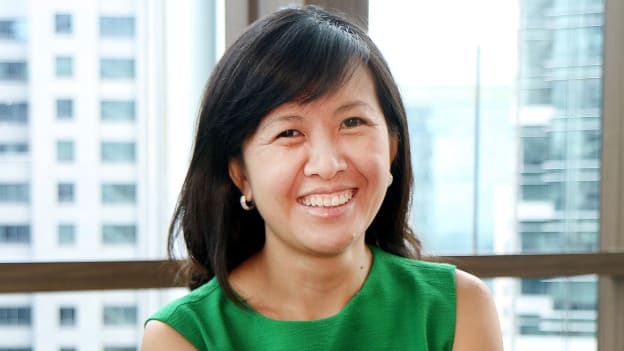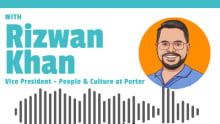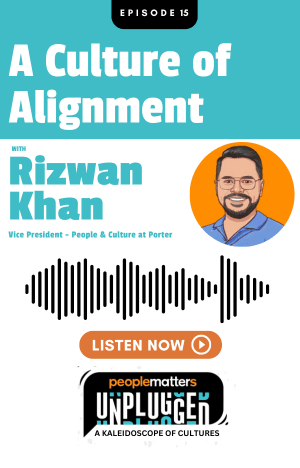Learn beyond your job scope to be future-ready: Bank of Singapore's Stephenie Teo

READ the October 2021 issue of our magazine: The Skills Gap Conundrum
It's no longer enough to follow the path of learning and development laid out by others; if people want to really be future-ready and advance with the fast-evolving environment, they need to pursue learning beyond what has been currently prepared or recommended. That's the advice offered by Stephenie Teo, Head of Learning and Talent Management at the Bank of Singapore.
“The concept of unlearning and relearning has never been more relevant for employees across all ranks,” she told People Matters. “And it is not just about learning skills that are currently essential, it is also about learning skills that are deemed to be useful in the future based on today’s trends.”
It's about adapting, she explained: the pandemic has shown everyone that a wait-and-see attitude just won't work. Pointing to last year's accelerated digitalisation as an example, she said: “Businesses that were previously hesitant have had to embrace digitalisation as part of their business transformation as a result of the restrictions brought about by the pandemic and the change in consumer behaviour. Businesses do not have a choice. They not only have to adapt, but to do so quickly.”
“Critical to this is having a growth mindset – to experiment new things and accept failures along the way – to elevate oneself.”
And one aspect of that, she added, involves getting away from the mentality that learning is confined only to the boundaries of a person's present job scope.
Continuous learning and the agile mindset
Continuous learning has been a buzzword in skilling discussions for quite a few years now, but what does it mean in today's volatile environment? Firstly, it involves recognising that a person's learning needs and objectives will change as they progress in their career, and their approach should evolve accordingly.
“Typically, newcomers to the industry would require more guided training to impart basic knowledge and processes to instil standards,” Teo says. “When one becomes a subject matter expert or progresses on to a managerial role, learning should be more self-directed."
"Having a good understanding of what is required of their roles and seeking out learning opportunities will deepen their value.”
Secondly, it has to go beyond just attending classes and workshops. Teo's perspective here draws at least partly on her own experience. She holds an MBA degree from ESSEC Business School, which she acquired several years ago when she moved into an enterprise leadership role. She was 15 years into her career at that point and although additional qualifications were not a requirement, she felt it was necessary to arming herself with the knowledge to better understand her stakeholders’ needs. And while any sort of degree inevitably involves some amount of classroom learning, she believes that is just the jumping-off point and not an end in itself.
“The way forward is to adopt an agile mindset to experiment, iterate, observe and pivot,” she said. “Don’t wait to attend the next class, but do your own research on use cases to help uncover insights to your immediate solutions. The learning evolves as we move along and we get more adept in the way we think, deliver or present.”
Even seemingly small activities such as reading articles outside one's immediate scope, mentoring others, or giving talks are all part of continuous learning, she explained, simply because these things push a person to pick up wider knowledge, interact outside the boundaries of the job, and exercise different skills.
Give employees multiple different ways to learn
Organisations need to match their employees' willingness to learn by providing them with multiple channels for learning. The efficacy of any given learning approach depends on the content, target audience and duration, Teo said; for instance, whether someone is learning by themselves, on the job, or through a structured programme.
“Online learning, on-demand, or micro-learning are useful for self-directed knowledge acquisition while classroom-style learning – virtual or face-to-face – serves as an experiential learning platform,” she said.
Conventional face-to-face programmes remain a favourite because of the potential to do more social learning and interactive activities, she added, but it is possible to bring these into a virtual synchronous classroom setting by re-designing the content into small modular segments. And of course, there is the trend of gamifying the learning experience, because studies have shown that people learn more effectively when having fun.
The methods are only one half of the approach, though. Besides providing employees with the tools, organisations also need to integrate the opportunities for learning into policies, processes, and culture. For example, supporting staff who take external education programmes that are related to their jobs, through study leave or even financial support.
Most importantly, there has to be buy-in from managers, Teo said.
“Managers play a huge role in facilitating learning in the workplace. They must understand that the development of their staff is closely tied to their success.”
“As the best form of learning takes place on the job, managers have to create suitable avenues to embed stretch opportunities, exposures, projects, and assignments to add colour into learning,” she said. “I would also encourage managers to have deliberate learning conversations with their staff either to select relevant training or engage their staff in pre- and post-training conversations on how they may apply their skills on the job.”
To make learning meaningful, know the purpose of the role
The primary objective of learning and skilling is for people to be able to contribute in a way that's meaningful to them, and the meaning is really central, Teo said: it's how people can find not just competence but enjoyment.
“Indeed, moving forward, it is more than just acquiring skills, or even the “right skills”. What is important is enjoying what we do. Even if one possesses the “right” skills to be future-ready in 5-10 years but finds no meaning in what we do at work, it would be a real pity,” she said.
“Hence, one should know the purpose of your role and how it contributes to the company. That is how one would derive meaning in what we do.”














